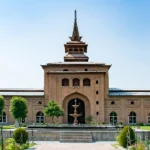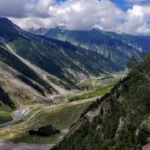Table of Contents
Toggle- Overview
- Historical Importance of Kheer Bhawani Mela
- Rituals and Traditions of Kheer Bhawani Mela
- The Cultural Events At Kheer Bhawani Festival
- Social and cultural impact of the Kheer Bhawani Mela
- Conclusion: Future of Kheer Bhawani Mela
- How to book Kheer Bhawani Temple Visit online?
- People Also Ask
- What is Kheer Bhawani Mela?
- When is Kheer Bhawani Mela celebrated?
- What is the significance of the Kheer Bhawani Temple?
- Why is the water in the Kheer Bhawani spring important?
- What rituals are performed during the Kheer Bhawani Mela?
- Why is Kheer offered to Goddess Ragnya Devi?
- What is the meaning behind the Kheer Bhawani water changing color?
- Where is the Kheer Bhawani Temple located?
- How do devotees reach the Kheer Bhawani Temple?
- What is the historical significance of the Kheer Bhawani Mela?
- What are the cultural activities during the Kheer Bhawani Mela?
- Is food served during the Kheer Bhawani Mela?
- What is the role of Kashmiri Pandits in the Kheer Bhawani Mela?
- How long does the Kheer Bhawani Mela last?
- What kind of music is played during the Kheer Bhawani Mela?
- What is the significance of the sacred Kheer offering?
- What dances are performed during the Kheer Bhawani Mela?
- Can non-Hindus attend the Kheer Bhawani Mela?
- Is the Kheer Bhawani Mela a religious or cultural event?
- What other attractions are near the Kheer Bhawani Temple?
- How do pilgrims prepare for the Kheer Bhawani Mela?
- What role does the local community play in the Mela?
- Is Kheer Bhawani Mela celebrated outside Kashmir?
- Why is the Kheer Bhawani Mela so important for the Kashmiri Pandit community?
- How can I participate in the Kheer Bhawani Mela?
- Inquiry Form
Overview
Kheer Bhawani Mela is one of the most sacred religious and cultural events of Kashmir. Thousands of devotees throng it every year. It is conducted at the Kheer Bhawani Temple located in Tulla Mulla near Srinagar in the honor of Goddess Ragnya Devi, popularly known as Kheer Bhawani. First, very importantly, is the religious dimension to the significance of this festival to Kashmiri Pandits and equally regarding the implication it carries from a cultural angle to the community. The Mela was not just comprised of ritualistic religious ceremonies with folk music, and color dances, but a celebration of community harmony as well.
Such festival time is of immense worth for the Kashmiris, during which they relive the history, heritages, and connect well with each other through this event. The spiritual practices along with the various cultural expressions render the Kheer Bhawani Mela as one of the very prominent symbols for the identity of the Kashmiri Pandit community. In this comprehensive blog, let us continue about the history of Kheer Bhawani Mela rituals, cultural value, and their social significance among the Kashmir communities.
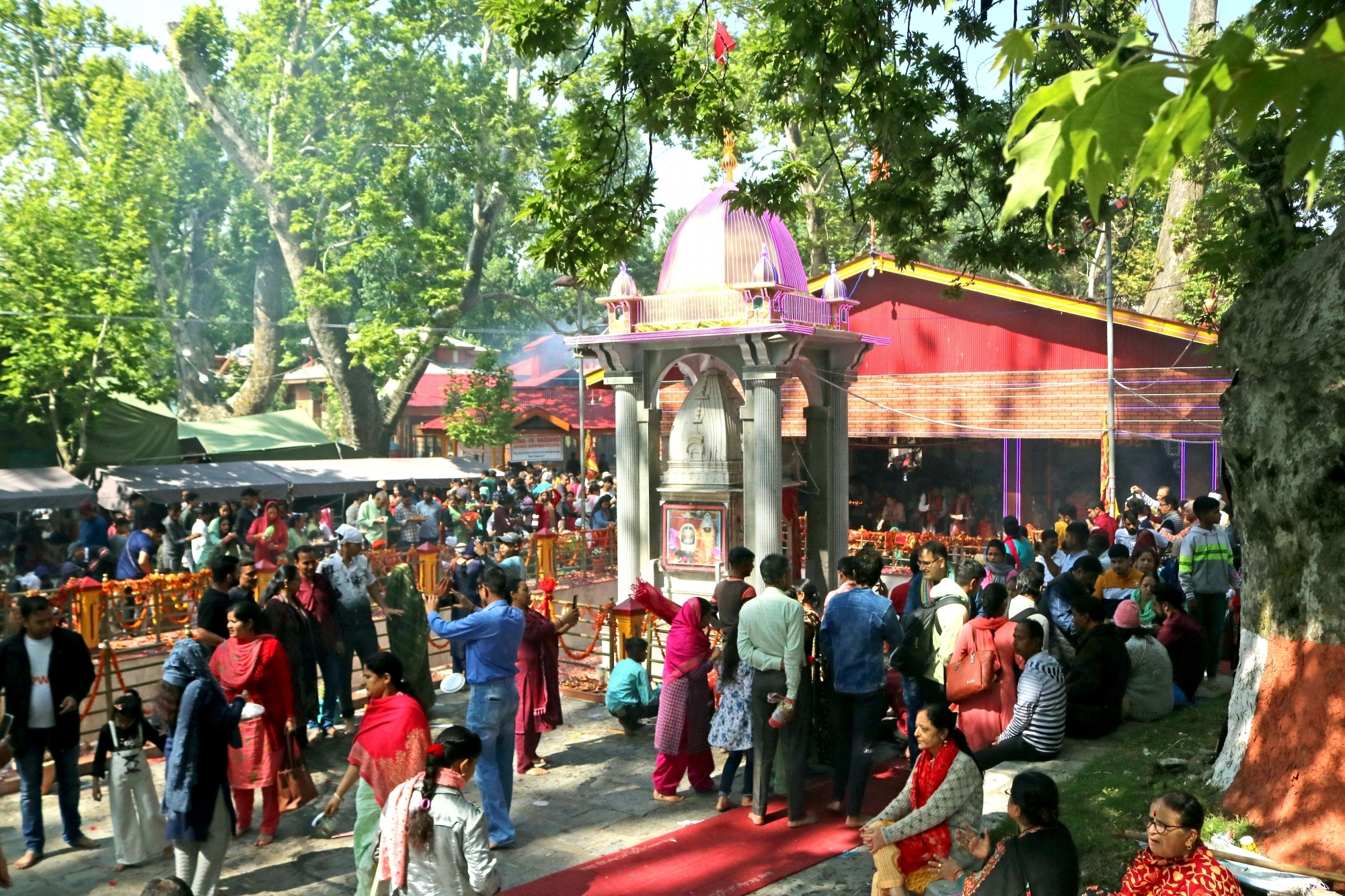
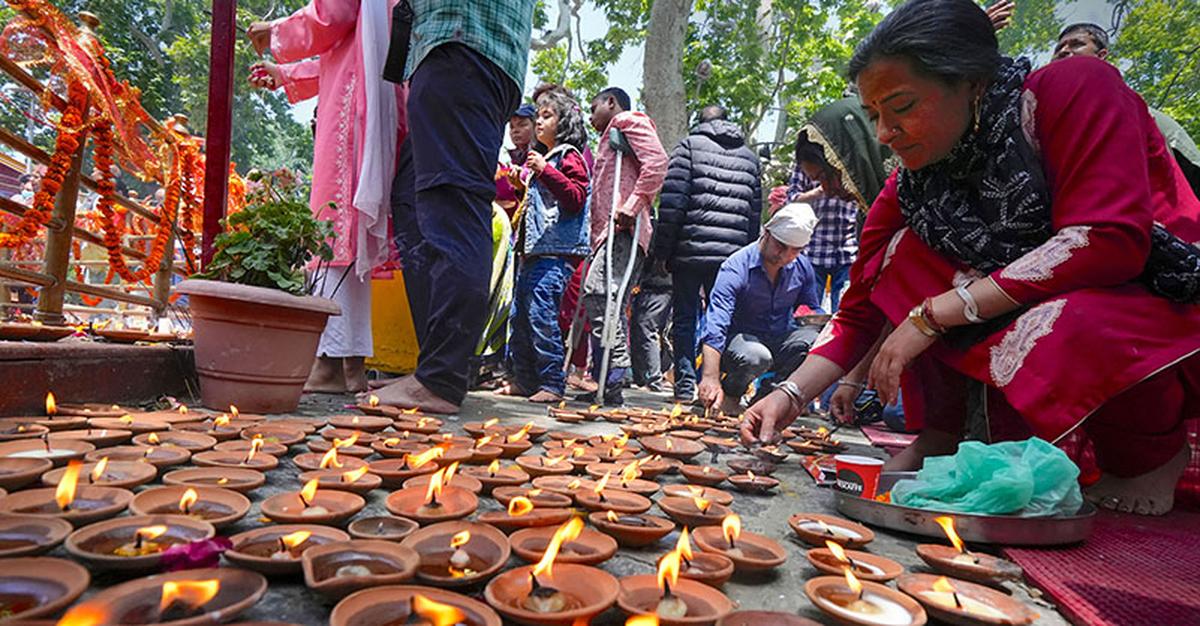
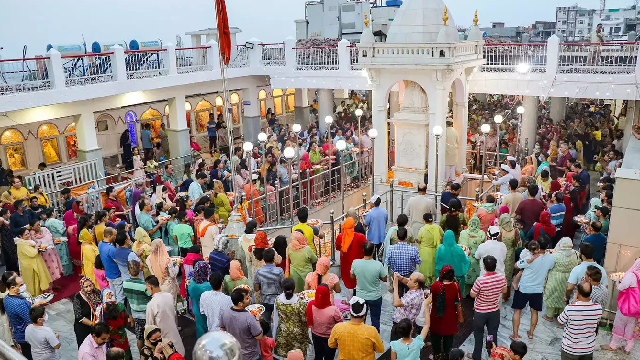
Historical Importance of Kheer Bhawani Mela
Kheer Bhawani Temple is perhaps the most revered temple in Kashmir, dedicated to Goddess Ragnya Devi. She is held as the avatar of Goddess Durga. Tulla Mulla is the site where this temple is located; it is some 25 km from Srinagar. Thousands of devotees flock to the temple every year for Kheer Bhawani Mela. According to mythical origin, it is a fabled story behind the fair – how the goddess appeared miraculously in the shape of a spring of Kheer, sweet rice pudding.
The History of the Temple
The Kheer Bhawani Temple was built by Jammu and Kashmir’s King Ranbir Singh in the 19th century; however, the shrine’s significance and the worship of the goddess had even earlier origins. According to local tradition, goddess Ragnya Devi had taken an incarnation as a spring of Kheer, which had developed into a flowing stream of water from a holy spring lying within the temple itself. It is believed that the water of this spring possesses divine powers and that the goddess herself consumes the Kheer, which is the primary offering during the Mela.
The history of the temple is also merged with the religious practices of the Kashmiri Pandit community. The shrine was earlier visited by the ancient sage Kashyapa, and the shrine has been used as a center for spiritual learning by generations. Through the passage of time, the temple evolved as a pilgrimage center where people went there and prayed to get the blessings of the protection, prosperity, and peaceful existence from Goddess Ragnya Devi.
Sacred Spring with its magical energy
The sacred spring is said to have mystic properties, and the most significant attraction at Kheer Bhawani Temple is the water here that is often found changing colors. During the Kheer Bhawani Mela, devotees observe the spring very closely because the water of this spring turns various colors: sometimes clear, black, or even red. It is interpreted as divine will and believed to be a portent of what the future of that region may be.
Black Water: Generally, it is the sign of some approaching problem or some natural disaster in that region.
White Water: Peace and tranquility along with a good time.
Red Water: Sign of a battle or some tussle; generally seen as the approaching issue for that region.
Such a change in color always generated interest among the devotees regarding what goddess Ragnya Devi communicated with them through such color changes. These also made this Kheer Bhawani temple more mystical.
Rituals and Traditions of Kheer Bhawani Mela
Kheer Bhawani Mela is one of those festivals that extend into several days as well during the full moon day in Jyeshtha month that usually falls between the months of May and June. The festivals entail numerous spiritual rituals prevailing based on tradition and culture.
- Pilgrimage to the Temple
One of its significant attractions includes Kheer Bhawani Mela; where each devotee moves forward to Tulla Mulla. Thousands of faithful individuals gather there and move ahead by covering even massive distances from the corner and crevices of life. Climbing up and walking such an immense distance, then reach the Temple Kheer Bhawani premises, hence most crucially makes them an ardent lover of God at heart.
It is composed of local Kashmiri Pandits and other residents from other Indian states. Devotees also carry other offerings, which include Kheer, rice pudding; flowers; and fruits, which the devotees later offer to Goddess Ragnya Devi for her divine intervention in their respective lives to achieve well-being as well as for protection. Eventually, they finish at the temple, where people perform the set of rituals as well as religious prayers during Mela.
- Significance of Offering the Kheer
The major religious function of Kheer Bhawani Mela is offering of Kheer, which is a sweet preparation made with rice, milk, sugar, and cardamom. Kheer is considered to be the most sacred offering to the goddess. Kheer has been offered for purity and fertility. It has been done for years and offered to the goddess as gratitude to the boons received during the previous year. People will ask for prosperity, peace, and safety in the new year.
As this Kheer offering rite also consists of reading and seeking the favor of sacred text and mantras. Offering of Kheer is shared among people because that is also demonstrating their unity as well. For goddess herself consuming Kheer, taking this act of Kheer offerings is also of very good omens.
- The Sacred Aarti and Hawan
During the time of Mela, this temple remains on its toes due to devotional prayers and hymns during performing the sacred rituals of Aarti and Hawan. The aarti is a propitious song in the name of Goddess Ragnya Devi; they are mainly offered at early dawn. In the temple compound, devotees sit holding lamps, singing aartis to Goddess, and praying for divine favors from the goddess.
The other very significant aspect of the festival is Hawan that is a fire ritual. Ghee, herbs, and sacred wood are all burnt in the pious fire. It is said that this ritual purifies the surroundings and brings divine blessings to people. Priests chant Vedic mantras while performing the ritual; therefore, the whole environment turns out to be deeply reverent and spiritual.
- The Role of the Local Community
The local community is the soul of the Kheer Bhawani Mela. Kashmiri Pandits, who constitute the majority population in the region, have kept the temple and its traditions since time immemorial. Despite the fact that many members of the community were displaced during the 1990s due to the Kashmir conflict, they still participate in the Mela and keep the traditions.
The community members also prepare the event, manage the pilgrims, and ensure that all the rituals are performed as traditionally required. Some local volunteers also prepare food for the devotees, mainly the Kheer, which forms part of the offering. The event helps unite people who come from different parts of the world over their inherited cultural heritage.
The Cultural Events At Kheer Bhawani Festival
Kheer Bhawani festival is basically a religious ceremony but equally a celebration of Kashmiri culture. It has been a venue for folk music and dance, food, and general activities that were a part of the mainstream life of the Kashmiri Pandits for ages .
- Kashmiri Traditional Music and Dance
It is all about music and dance forms in the Srinagar Mela. On one hand, the local artists welcome this festival through melodies of music and dance forms. Traditional songs of Kashmir sing by local artists with instrumental background music using majorly Santoor, Sitar, and Tabla and making it spiritually rich as well as a joyous celebration. Folks who dedicate their heart towards devotional and loveliness towards the valley celebrate the moment while singing these beats in rhythm.
There are dances also, Kashmiri dances such as Rouf and Dandiya, performed at the festival, which are vibrant, full of dynamism because most of the time, participants carry out these dance performances dressed traditionally in their garments. Sometimes, they reflect the profound human attachment to this land and spirituality attached to a goddess.
- Kashmiri Cuisine and Celebrations
The major seat of the Kheer Bhawani Mela is on food, and the festival welcomes everyone in the venue for authentic Kashmiri delights. Other than the holy offering of Kheer, several dishes are prepared, and it is provided to each one. Specialties of such dishes include Rogan Josh, Dum Aloo, Yakhni, and Shab Deg, which are especially designed in Kashmir cuisine.
Another specialty of the festival is Kahwa, which is the traditional Kashmiri tea laced with saffron, cardamom, and cinnamon. This warming brew also complements the festival environment; the worshipers like this tea while paying their regards and sharing the offered meals. This food-sharing function is also extremely important in Mela; the community views hospitality, generosity, and unity from this perspective.
- Crafts and Handmade Products
Along the roads across Mela, street stalls are placed on street corners in the Kheer Bhawani Temple, in which the Kashmir handicrafts and products of the artisans are available for purchasing. Among the famous traditional items available in those stalls are the Pashmina shawl, the Kashmir carpet, and Papier-mâché. Shopping in this fair benefits a substantial number of the artisans and stimulates economic growth.
Social and cultural impact of the Kheer Bhawani Mela
The Kheer Bhawani Mela possesses immense social as well as cultural influence on the Kashmiri mind that dates from the history page. This celebration has gained the relevant importance at some point, though not religiously as an affair of any devotion, but rather the event of more of a nature cultural, within which all hues and shades of human beings come to share and glorify their ancestral culture together.
- Reunion with Heritage Kashmiri
The Kheer Bhawani Mela was a homecoming, an emotional comeback for the Kashmiri Pandits who had to leave this region due to political unrest. Many have come back here after years only to reconnect to their roots as they visit this temple. Here, they will get a chance to remember some of the ancestor’s traditions to keep their cultural practice alive.
- A Symbol of Unity and Resilience
Still, in terms of unity and tenacity, it stands as an iconic symbol for the Kashmiri Pandit community. Even after all these long years of toil, this festival has proven itself to be the living icon of faith and hope. It is a testament that cannot be severed from cultural and spiritual bondage of the community; when miles apart in this wide world, they still unite to celebrate all benevolent gifts that are bestowed on them by their goddess, Goddess Ragnya Devi.
Conclusion: Future of Kheer Bhawani Mela
As the world changes, so does the Kheer Bhawani Mela. The rituals and celebrations are the same but there is an increasing need to ensure that younger generations do value the cultural and spiritual significance of the Mela. Traditions surrounding the festival must be passed down to the next generations, so that the Kheer Bhawani Mela continues to be a beacon of faith, culture, and community for years to come.
The Kheer Bhawani Mela is a festival that represents much more than religious devotion; it is a celebration of Kashmiri identity, a symbol of hope, and a testament to the resilience of the Kashmiri people. Whether through the pilgrimage, the offerings, the music, or the shared meals, the Kheer Bhawani Mela remains an essential part of Kashmir’s spiritual and cultural landscape.
How to book Kheer Bhawani Temple Visit online?
Contact Brown Chinar at +91 6005039532/+91 9906188874 or Email us at : Enquiry@brownchinarkashmir.com


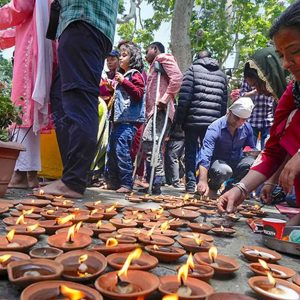

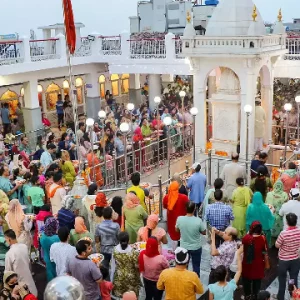
People Also Ask
What is Kheer Bhawani Mela?
The Kheer Bhawani Mela is an annual religious and cultural festival held at the Kheer Bhawani Temple in Tulla Mulla, Kashmir, dedicated to Goddess Ragnya Devi. Devotees gather to perform rituals, offer prayers, and seek blessings for prosperity and protection.
When is Kheer Bhawani Mela celebrated?
Kheer Bhawani Mela is celebrated on the full moon day of the month of Jyeshtha, typically falling between May and June each year, depending on the lunar calendar.
What is the significance of the Kheer Bhawani Temple?
The Kheer Bhawani Temple is one of the most sacred shrines for the Kashmiri Pandit community. It is dedicated to Goddess Ragnya Devi and is believed to be the site of a divine spring that has mystical properties, often changing color.
Why is the water in the Kheer Bhawani spring important?
The water of the spring in the Kheer Bhawani Temple is believed to change colors — black, white, or red — which is considered an omen or divine message about the future of the region, signaling either peace, prosperity, or unrest.
What rituals are performed during the Kheer Bhawani Mela?
Rituals during the Kheer Bhawani Mela include the offering of Kheer (sweet rice pudding), performing Hawan (fire rituals), Aarti (devotional songs), and praying for peace and prosperity. Devotees also offer flowers, fruits, and light oil lamps.
Why is Kheer offered to Goddess Ragnya Devi?
Kheer is considered the most sacred offering during the Kheer Bhawani Mela. It symbolizes purity, abundance, and gratitude. Devotees prepare and present it to Goddess Ragnya Devi to seek her blessings for health, happiness, and prosperity.
What is the meaning behind the Kheer Bhawani water changing color?
The color of the water in the spring is believed to signify the goddess’s divine messages. For instance, black water is seen as a warning of potential disaster, white water symbolizes peace and prosperity, and red water is a sign of conflict or challenges.
Where is the Kheer Bhawani Temple located?
The Kheer Bhawani Temple is located in Tulla Mulla, about 25 kilometers from Srinagar, Kashmir. It is surrounded by scenic beauty, making it a popular destination for pilgrims and tourists alike.
How do devotees reach the Kheer Bhawani Temple?
Devotees can reach the Kheer Bhawani Temple by traveling from Srinagar, either by car or on foot. The pilgrimage to the temple is an important spiritual journey for many, despite the challenging terrain.
What is the historical significance of the Kheer Bhawani Mela?
The Kheer Bhawani Mela has been celebrated for centuries, tracing its roots back to the 16th century when Kashmiri Pandits started worshiping Goddess Ragnya Devi. The Mela is both a religious observance and a celebration of Kashmiri culture and identity.
What are the cultural activities during the Kheer Bhawani Mela?
Cultural activities during the Mela include traditional Kashmiri music and dance performances. Folk songs are sung, and dances like Dandiya and Rouf are performed, representing Kashmiri traditions and community spirit.
Is food served during the Kheer Bhawani Mela?
Yes, food plays a major role in the Kheer Bhawani Mela. Apart from Kheer, other traditional Kashmiri dishes like Rogan Josh, Yakhni, and Dum Aloo are prepared and shared among devotees as part of the celebration.
What is the role of Kashmiri Pandits in the Kheer Bhawani Mela?
Kashmiri Pandits, especially those who have migrated due to the Kashmir conflict, play a vital role in organizing and participating in the Kheer Bhawani Mela. It is a means for them to reconnect with their cultural roots and spirituality.
How long does the Kheer Bhawani Mela last?
The Kheer Bhawani Mela typically lasts for several days, with the main celebrations happening around the full moon day. Devotees often arrive days in advance, and the festival includes both spiritual and cultural events.
What kind of music is played during the Kheer Bhawani Mela?
Traditional Kashmiri music, including folk songs and devotional hymns, is an essential part of the Mela. Instruments like the Santoor, Rabab, and Tabla are used to create a spiritual and festive atmosphere.
What is the significance of the sacred Kheer offering?
The Kheer offering is significant as it symbolizes both purity and gratitude. It is believed that Goddess Ragnya Devi herself consumes the Kheer, making it a powerful offering for devotees seeking blessings.
What dances are performed during the Kheer Bhawani Mela?
Traditional Kashmiri dances such as Rouf and Dandiya are performed during the Mela. These dances involve rhythmic clapping and footwork, representing the unity and cultural heritage of Kashmir.
Can non-Hindus attend the Kheer Bhawani Mela?
Yes, the Kheer Bhawani Mela is open to people of all faiths. While it is a Hindu religious festival, it is also a celebration of Kashmiri culture and is often attended by people from different backgrounds.
Is the Kheer Bhawani Mela a religious or cultural event?
The Kheer Bhawani Mela is both a religious and cultural event. It involves devotion and rituals related to Goddess Ragnya Devi, but it also celebrates Kashmiri culture through music, dance, and food.
What other attractions are near the Kheer Bhawani Temple?
The Kheer Bhawani Temple is located in a scenic area of Kashmir, with beautiful views of the surrounding mountains and valleys. Visitors can also explore the nearby town of Srinagar and attractions such as Dal Lake, Mughal Gardens, and the Shankaracharya Temple.
How do pilgrims prepare for the Kheer Bhawani Mela?
Pilgrims prepare for the Mela by gathering offerings, including Kheer, fruits, flowers, and lighting lamps. Many also fast before arriving at the temple, as part of their devotion and to seek blessings from Goddess Ragnya Devi.
What role does the local community play in the Mela?
The local community is instrumental in organizing the Mela, offering hospitality, helping pilgrims, and preparing food. Volunteers manage the temple, ensuring that rituals are carried out properly and that the festival runs smoothly.
Is Kheer Bhawani Mela celebrated outside Kashmir?
Yes, the Kheer Bhawani Mela is also celebrated by Kashmiri Pandit communities living outside Kashmir. Though the celebration is more grand in Kashmir, many communities hold local gatherings, prayers, and feasts in honor of Goddess Ragnya Devi.
Why is the Kheer Bhawani Mela so important for the Kashmiri Pandit community?
The Kheer Bhawani Mela is crucial for the Kashmiri Pandit community as it strengthens their religious and cultural identity. It is a reminder of their heritage and traditions, especially for those who have been displaced due to the conflict in Kashmir.
How can I participate in the Kheer Bhawani Mela?
To participate in the Kheer Bhawani Mela, one can either travel to Kashmir and visit the Kheer Bhawani Temple in Tulla Mulla or attend smaller celebrations hosted by the Kashmiri Pandit community in different parts of the world. It’s important to engage in the rituals with respect and devotion.

